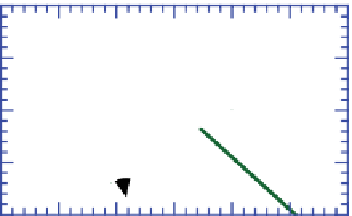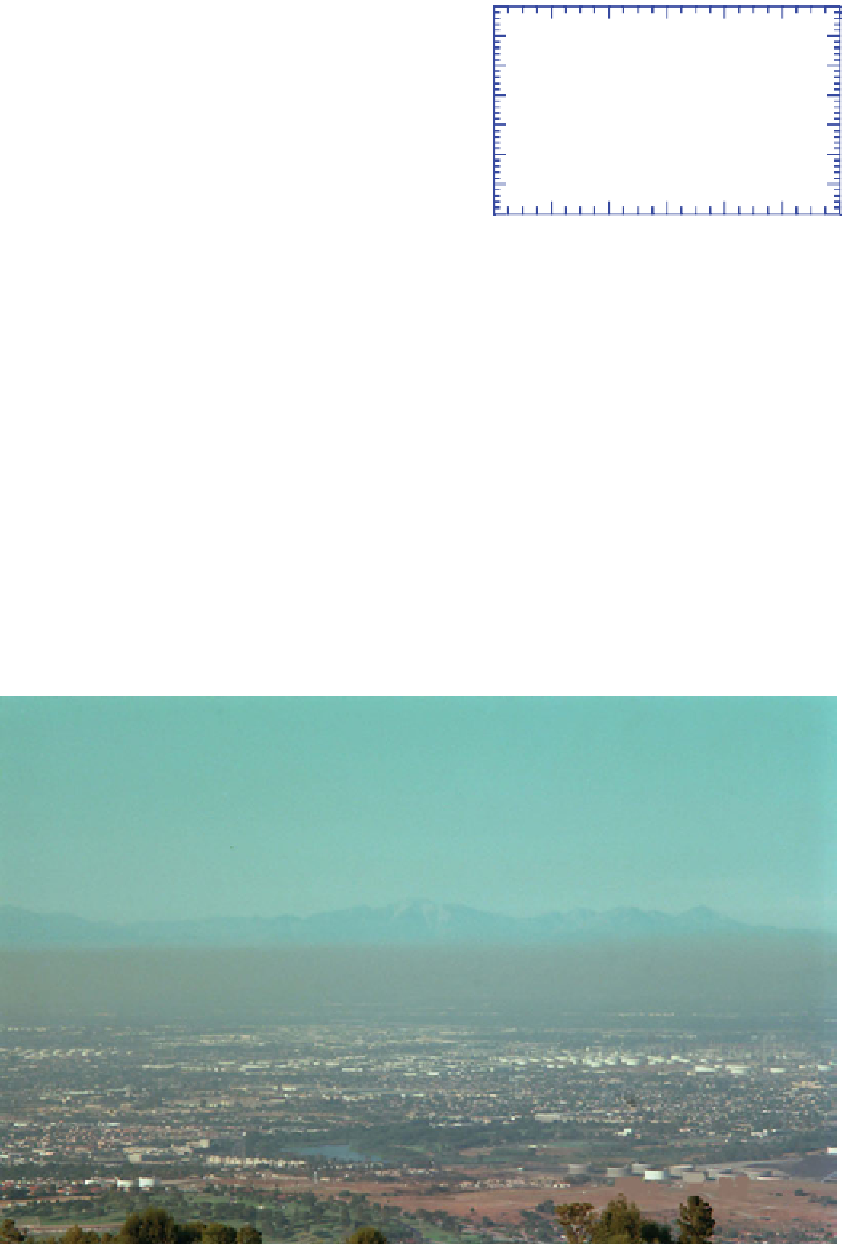Geoscience Reference
In-Depth Information
0.9
2
0.8
1.5
0.7
0.6
1
9:00
0.5
06:00
0.4
0.5
16:00
0.3
12:00
03:00
0.2
0
5
10
15
20
25
30
35
6
8
10
12
14
16
18
Temperature (
o
C)
Hour of day
(a)
(b)
Figure 6.14.
(a) Schematic showing the gradual chipping away of a morning radiation/large-scale subsidence
inversion to produce an afternoon large-scale subsidence inversion. (b) Change in the inversion base height
during the day corresponding to the chipping-away process in (a).
depths are also high, so primary pollutants become more
diluted, decreasing their mixing ratios. Afternoon rush
hours are also spread over more hours than are morn-
ing rush hours. Despite thick afternoon mixing depths,
some secondary pollutants, such as O
3
(g), PAN(g), and
secondary (aged) aerosol particles, reach their peak
mixing ratios in the afternoon, when their chemical for-
mation rates peak.
Figure 6.16 illustrates the seasonal variation of the
afternoon inversion profile in Los Angeles. During the
winter, the large-scale subsidence inversion is often
weak because the center of the Pacific high is far from
Los Angeles and temperatures aloft in Los Angeles are
low. During the summer, the inversion is often strong
because the center of the Pacific high is close to Los
Angeles and temperatures aloft are high. During the
spring, the inversion is of medium strength because the
center of the Pacific high is a medium distance from
Los Angeles. The inversion base height may be higher
in spring than in summer, as illustrated in Figure 6.16.
Figure 6.15.
Photograph of pollution trapped under a large-scale subsidence inversion in Los Angeles,
California, on the afternoon of July 23, 2000. Photo by Mark Z. Jacobson.

















Search WWH ::

Custom Search